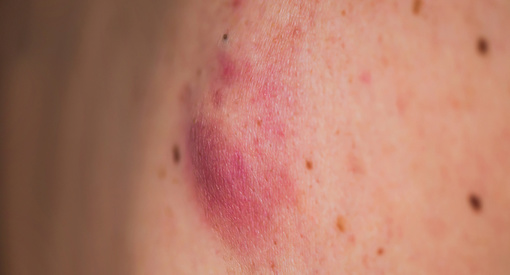 Let’s be completely honest: moles and skin tags have a tendency to be irritating. Aside from this, they can also cause quite a lot of unnecessary confusion, as most people don’t understand the differences between them. And, as annoying as they may be, the good news is that neither one of them poses a serious risk to your health. If you are one of the thousands of people in the US who spends far too much time googling what to do about your moles or skin tags, then you should probably make an appointment to have them removed. Before you do, though, here are the top 10 differences between skin tags and moles to help you identify exactly what you are dealing with.
Let’s be completely honest: moles and skin tags have a tendency to be irritating. Aside from this, they can also cause quite a lot of unnecessary confusion, as most people don’t understand the differences between them. And, as annoying as they may be, the good news is that neither one of them poses a serious risk to your health. If you are one of the thousands of people in the US who spends far too much time googling what to do about your moles or skin tags, then you should probably make an appointment to have them removed. Before you do, though, here are the top 10 differences between skin tags and moles to help you identify exactly what you are dealing with.
What Are Skin Tags?
Skin tags are little flaps of excess skin that form as a result of friction. Perhaps the area is prone to being rubbed by another body part, clothing, or a collar. Skin tags are most commonly found under the arm, where there is constant friction between your arm and the side of your body.
As with warts, genital warts, and other skin lesions (except freckles), skin tags usually start out as small bumps or glands in the skin. Once these bumps start being exposed to friction, a snowball effect takes place and before you know it you have ended up with a little lump of skin hanging onto what looks like a thin stalk. This is one of the major ways to differentiate a skin tag from a mole, due to the fact that skin tags will always have a pedestal base.
Are Skin Tags Harmful?
No, not at all and you don’t have to remove skin tags. Basically just skin folds, these benign skin growths can be very irritating though, especially when they snag or catch in clothing and start bleeding. This is why most people who suffer from skin tags choose to visit a dermatologist to have them removed. Skin tags develop in sensitive areas like the armpits and the neck but can also develop in the genital area, as they like warm, moist environments.
What Are Moles?
Moles are more serious than skin tags because they don’t fit into a standard criterion. In general, moles tend to form slowly and they take quite a while to grow to their full size. Moles are commonly identified by the fact that they tend to be darker in color and can have hair sprouting from them. This is when you need to start being vigilant because if they start changing color or shape, they have the potential to develop into a cancerous growth and to remove moles at this stage is the best options. Certain individuals can be prone to developing moles as a result of sun exposure and even genetics.
Skin Tags and Moles vs. Skin Cancer
Another factor that makes lesions and moles even more confusing is the fact that neither one of them are dangerous when they first appear, but they have the potential to become malignant if they start displaying certain changes in appearance or size and need treatment. This is rarely the case with skin tags as there has never been a direct link between skin tags and cancer, but can be true when it comes to moles.
Here’s how to tell if your skin growth is normal:
- Normal moles will either be tan or brown in color. Not multi-colored.
- Normal moles will be generally rounded in shape, not asymmetrical.
- Your mole should not continue to increase in size.
There are so many little differences that can easily go unnoticed when it comes to cancerous moles, so if you do happen to notice any changes that are worrying—go and see your dermatologist to rule out anything serious. If your skin specialist thinks that there is cause for concern, they will likely just whip it off and send it to the lab for further testing.
Now that we are clear on the basics, let’s take a look at 10 ways you can tell the difference between moles and skin tags.
Color
As outlined above, moles have a tendency to be brown in color. They can also be darker or even red, in which case you should have your mole checked right away. Skin tags are almost always flesh colored—as they are literally just extensions of the skin that covers the rest of your body.
Shape
A mole can be either flat OR raised. But almost always round in shape. Skin tags always follow the same appearance—balls of fleshy skin that are attached to the body by narrow stalks.
Diameter
A skin tag will usually be small. And if you are unlucky enough to have several skin tags, you will probably notice that they are all very similar looking in size and shape. A mole has a tendency to be larger, but anything bigger than six millimeters in diameter can indicate a melanoma, so be vigilant and monitor all of your moles regularly.
Evolution
Once a skin tag appears, it’s pretty much done growing and you won’t really see any evolution in the size or color unless it is subjected to continuous friction. A mole can appear as a spot and then gradually grow into its final shape.
Location
Skin tags can be found in areas of the body that are exposed to friction. They are also prone to appearing in sensitive areas like the under eye. Moles can also be found in random locations, but most commonly they will be found in parts of the body that are frequently exposed to the sun.
Hair
Moles can have hair sprouting from them, whilst a skin tag will not.
Cancerous Potential
Normal moles and skin tags share the same thing in common—they are both benign growths. But moles are much more prone to becoming cancerous, whereas skin tags do not have any links to cancer. This article will give you a clearer insight into the different types of moles and when you should be concerned.
Genetics
Skin tags usually develop in overweight children or adults and they are not genetic. Moles can be genetic and you might even notice that your moles are in the same places as your parents have them.
Tenderness
Neither skin tags nor moles should be tender if they are completely benign, but out of the two, moles are prone to tenderness. If your skin tag has started bleeding as a result of continuously catching on clothing or anything else, then you might want to consider removing it for a more comfortable lifestyle.
Visually Appealing
Sadly, skin tags are almost never pretty. Moles, on the other hand, can add a unique factor to someone’s appearance and, in many cases, they can even enhance your looks (think Cindy Crawford.)
If you have either skin tags or moles, then you should never try to remove them on your own and, if in doubt, always check your moles and skin tags for the following signs that could indicate something more sinister.
- Asymmetry
- Border irregularity
- Color variation
- Diameter (anything over 6 mm is cause for concern)
Conclusion:
When it comes to skin conditions, you should always be vigilant and routinely monitor any changes that appear. Most doctors recommend a skin cancer screening once a year, but many people choose to just rely on their intuition and only take action when problems like pain or bleeding occur. The issue with this is that many symptoms will only start appearing when your body really needs you to take notice- by which point it could be harder to reverse the damage already caused. The purpose of being vigilant of the ABCD mole-checking method as outlined above is to ensure that you notice potentially harmful changes sooner rather than later. And while the Internet is littered with natural DIY methods for skin tag removal, you should never even think to attempt any of these if you are dealing with a mole. Your health insurance will cover skin tag or mole removal if your dermatologist recommends it and even if you have to fund your procedure personally, it shouldn’t come to more than about $500. The good news is, almost everyone in the world has moles or skin tags; therefore, they aren’t going to make you stand out in a crowd. But if you feel that your self-esteem is being affected by the appearance of unsightly moles or skin tags, then you can have them removed in office, without having to go through any pain whatsoever.
Finally, if you already have several moles (the average American adult tends to have up to 40), then you have to take extra precautions with regards to sun exposure. This is especially true of those with fair skin, as the risk of developing a melanoma is much greater than those who have darker skin. UV radiation from artificial sources like tanning booths or sunlamps is an absolute no-go, as they have been proven to cause skin damage and melanoma.

